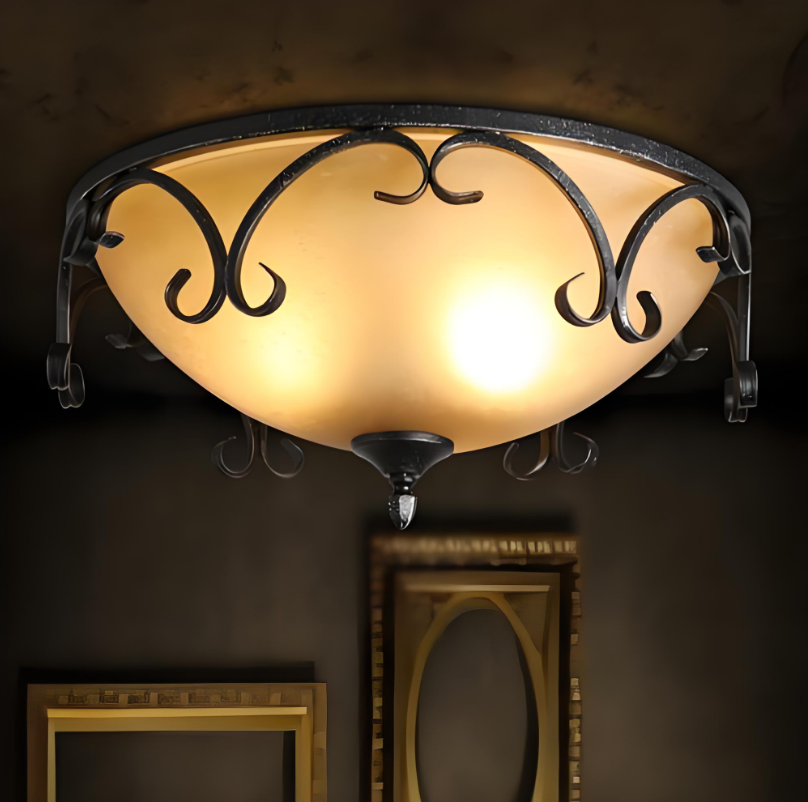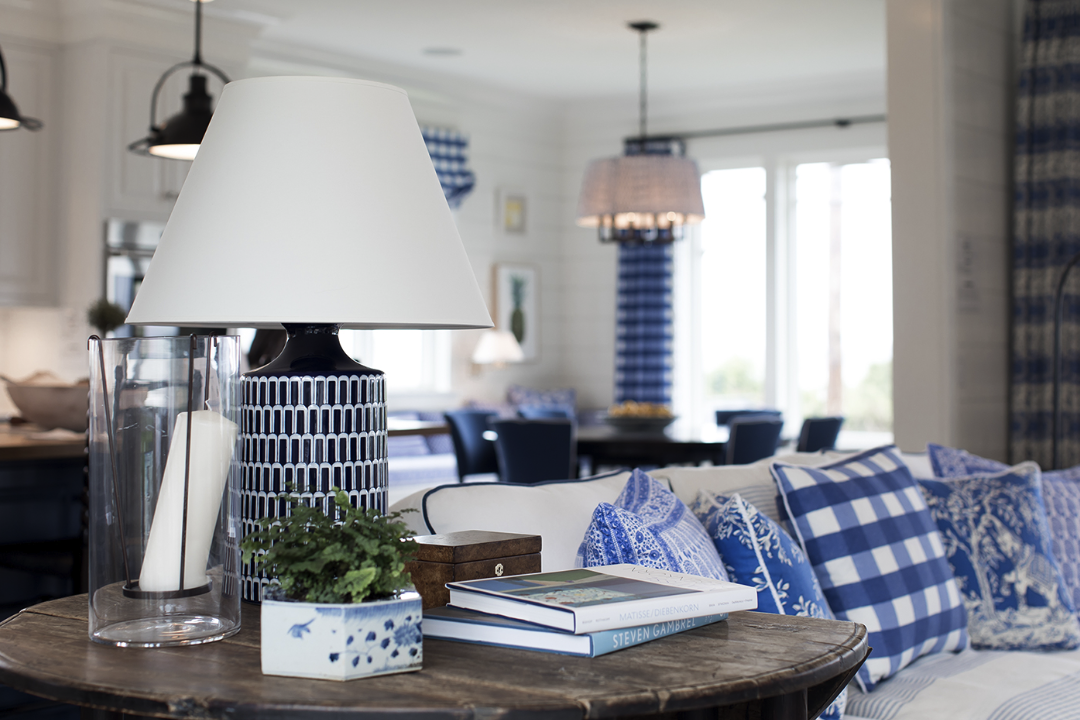Lighting is an essential element in any home. It not only serves a functional purpose but also has a significant impact on the overall ambiance and aesthetics of a space. The right lighting can enhance mood, productivity, and overall well-being. In this article, we will explore the importance of lighting in a home and provide tips and strategies for choosing the right light bulbs and fixtures for each type of lighting. We will also discuss the benefits of natural light and smart lighting systems, as well as the importance of regular maintenance for lighting fixtures and bulbs.
Understanding the Importance of Lighting in Your Home
Lighting plays a crucial role in creating the desired atmosphere in a home. It has the power to influence mood, productivity, and overall well-being. Bright, natural light can boost energy levels and improve focus, while soft, warm light can create a cozy and relaxing ambiance. By understanding the impact of lighting on our daily lives, we can make informed decisions when it comes to choosing the right lighting for our homes.
In addition to its impact on mood and well-being, lighting also has a significant effect on the aesthetics of a space. The right lighting can enhance the architectural features of a home, highlight artwork or decor, and create visual interest. On the other hand, poor lighting can make a space feel dull, uninviting, or even unappealing. By carefully considering the lighting design in our homes, we can create a visually pleasing environment that reflects our personal style and enhances the overall design.
Types of Lighting: Which One Suits Your Home Best?
When it comes to lighting design dijea, there are three main types of lighting: ambient, task, and accent. Each type serves a specific purpose and is best used in different areas of a home.
Ambient lighting is the general illumination that provides overall brightness to a space. It is usually achieved through ceiling-mounted fixtures such as chandeliers, flush mounts, or recessed lights. Ambient lighting creates a warm and inviting atmosphere and is essential in areas where people gather, such as living rooms, dining rooms, and kitchens.
Task lighting, as the name suggests, is focused on providing adequate light for specific tasks or activities. It is typically used in areas where detailed work is done, such as home offices, kitchens, and bathrooms. Task lighting can be achieved through desk lamps, under-cabinet lights, or pendant lights. It is important to position task lighting fixtures properly to avoid shadows or glare that can cause eye strain.
Accent lighting is used to highlight specific architectural features, artwork, or decor in a space. It adds depth and visual interest to a room and creates a focal point. Accent lighting can be achieved through the use of track lights, wall sconces, or picture lights. It is best used in areas such as hallways, staircases, or living rooms where you want to draw attention to a particular element.
Choosing the Right Light Bulbs for Your Home
Choosing the right light bulbs for your home is just as important as selecting the right fixtures. There are several types of light bulbs available on the market, each with its own pros and cons.
Incandescent bulbs are the traditional choice and produce a warm and soft light. However, they are not energy-efficient and have a shorter lifespan compared to other options.
Halogen bulbs are similar to incandescent bulbs but are more energy-efficient and have a longer lifespan. They produce a bright and white light that is ideal for task lighting.
Compact fluorescent bulbs (CFLs) are energy-efficient alternatives to incandescent bulbs. They last longer and use less energy but can take some time to reach full brightness.
LED bulbs are the most energy-efficient option available. They have a long lifespan and produce a bright and cool light. LED bulbs come in various color temperatures, allowing you to choose between warm or cool lighting.
When choosing the right bulb for each type of lighting in your home, consider factors such as color temperature, brightness, and energy efficiency. For ambient lighting, opt for bulbs with a warm color temperature to create a cozy atmosphere. For task lighting, choose bulbs with a cool color temperature to enhance focus and visibility. For accent lighting, consider using bulbs with a narrow beam angle to create a spotlight effect.
Tips for Choosing the Right Light Fixtures
In addition to choosing the right light bulbs, selecting the appropriate light fixtures is crucial in achieving the desired lighting design in your home. There are various types of light fixtures available, each with its own pros and cons.
Chandeliers are a popular choice for ambient lighting in dining rooms or entryways. They come in various styles and sizes, allowing you to find the perfect fit for your space. However, chandeliers can be expensive and may require professional installation.
Flush mounts are ceiling-mounted fixtures that provide general illumination in a space. They are versatile and can be used in any room of the house. Flush mounts are a great option for low ceilings or rooms with limited space.
Pendant lights are suspended from the ceiling and can be used to create a focal point or provide task lighting. They come in various styles and sizes, making them suitable for any room in the house. Pendant lights can be used individually or in clusters to create visual interest.
Wall sconces are mounted on walls and provide both ambient and accent lighting. They are versatile and can be used in hallways, bathrooms, or living rooms. Wall sconces come in various styles and can add a touch of elegance to any space.
When choosing the right fixture for each type of lighting in your home, consider factors such as style, size, and functionality. For ambient lighting, opt for fixtures that provide even distribution of light throughout the space. For task lighting, choose fixtures that can be adjusted or directed to provide adequate light for specific activities. For accent lighting, consider fixtures that can be easily positioned to highlight architectural features or decor.
How to Create Ambient Lighting in Your Home

Ambient lighting is essential in creating a warm and inviting atmosphere in a home. It provides overall brightness and sets the mood for a space. There are several ways to achieve ambient lighting in your home.
Ceiling-mounted fixtures such as chandeliers, flush mounts, or recessed lights are commonly used to create ambient lighting. Chandeliers are an elegant choice for dining rooms or entryways, while flush mounts are versatile and can be used in any room of the house. Recessed lights provide a clean and modern look and can be used to evenly distribute light throughout a space.
Table lamps and floor lamps can also be used to create ambient lighting. They provide a softer and more intimate glow compared to ceiling-mounted fixtures. Place table lamps on side tables or nightstands in living rooms or bedrooms, and use floor lamps in corners or next to seating areas.
To create a cozy and warm ambiance, consider using bulbs with a warm color temperature for your ambient lighting. Dimmer switches are also a great addition as they allow you to adjust the brightness of the light according to your preference.
The Benefits of Task Lighting in Your Home
Task lighting is essential in areas where detailed work is done, such as home offices, kitchens, and bathrooms. It provides focused and adequate light for specific tasks or activities, enhancing productivity and reducing eye strain.
In home offices, task lighting can be achieved through the use of desk lamps or adjustable floor lamps. Position the light source so that it illuminates the work surface without causing shadows or glare. Consider using LED bulbs with a cool color temperature for optimal visibility.
In kitchens, under-cabinet lights are commonly used as task lighting. They provide direct light to countertops, making food preparation and cooking easier and safer. Pendant lights can also be used above kitchen islands or dining tables to provide focused light for specific tasks.
In bathrooms, vanity lights are essential for grooming and applying makeup. They should be positioned on either side of the mirror at eye level to minimize shadows on the face. Consider using bulbs with a cool color temperature to achieve a natural and flattering light.
When it comes to task lighting, it is important to choose fixtures that can be adjusted or directed to provide adequate light for specific activities. Consider using dimmer switches to adjust the brightness of the light according to your needs.
Accent Lighting: Adding a Touch of Drama to Your Home
Accent lighting is used to highlight specific architectural features, artwork, or decor in a space. It adds depth and visual interest, creating a focal point and adding a touch of drama to your home.
Track lights are a popular choice for accent lighting as they can be easily adjusted and directed to highlight different elements in a room. They are commonly used in hallways, living rooms, or kitchens. Track lights come in various styles and can be customized to fit your specific needs.
Wall sconces are another great option for accent lighting. They can be used to highlight artwork or architectural features such as columns or alcoves. Wall sconces come in various styles and can add a touch of elegance to any space.
Picture lights are specifically designed to highlight artwork or photographs. They are mounted above or below the artwork and provide focused light that enhances its beauty and detail. Picture lights come in various sizes and finishes, allowing you to find the perfect fit for your artwork.
When using accent lighting, it is important to consider the placement and positioning of the fixtures. Experiment with different angles and distances to achieve the desired effect. Consider using bulbs with a narrow beam angle for a spotlight effect.
How to Use Natural Light to Your Advantage
Natural light is a valuable asset in any home. It not only provides free and energy-efficient lighting but also has numerous benefits for our well-being. By maximizing natural light in your home, you can create a bright and inviting space.
Start by considering the orientation of your home and the placement of windows. South-facing windows receive the most sunlight throughout the day, while north-facing windows receive the least. East-facing windows provide morning sunlight, while west-facing windows provide afternoon sunlight. Take advantage of these factors when planning the layout of your rooms.
Use window treatments such as curtains or blinds to control the amount of natural light entering a room. Sheer curtains allow diffused light to enter while still providing privacy. Blinds or shades can be adjusted to control the intensity of the light.
Consider the placement of furniture in relation to windows. Avoid blocking windows with large pieces of furniture that can obstruct natural light. Instead, position furniture to take advantage of natural light and create cozy seating areas near windows.
Mirrors can also be used to maximize natural light in a room. Place mirrors opposite windows to reflect and amplify the natural light. This will create a brighter and more spacious feel.
Lighting Control: Smart Solutions for Your Home
Smart lighting systems offer numerous benefits for homeowners. They provide convenience, energy efficiency, and customization options that traditional lighting systems cannot match.
Smart lighting systems allow you to control your lights remotely through a smartphone or tablet. You can turn lights on or off, adjust brightness levels, or even change colors with just a few taps on your device. This is especially useful when you are away from home and want to create the illusion that someone is there.
In addition to convenience, smart lighting systems are also energy-efficient. They allow you to schedule lights to turn on or off at specific times, reducing energy consumption. Some systems even have motion sensors that automatically turn off lights when no one is in the room.
Smart lighting systems also offer customization options that traditional lighting systems cannot provide. You can create different lighting scenes for different activities or moods. For example, you can have a “movie night” scene that dims the lights and sets a cozy ambiance, or a “party” scene that changes the colors of the lights to create a festive atmosphere.
When choosing a smart lighting system, consider factors such as compatibility with other smart home devices, ease of installation, and user-friendly interface. There are numerous options available on the market, so do your research and choose the system that best fits your needs and budget.
Lighting Maintenance: Keeping Your Home Bright and Safe
Regular maintenance is essential for keeping your lighting fixtures and bulbs in good condition. It not only ensures that your home remains bright and well-lit but also prevents potential hazards such as electrical fires.
Start by regularly cleaning your light fixtures to remove dust and dirt. Dust can accumulate on bulbs and fixtures, reducing their brightness and efficiency. Use a soft cloth or duster to gently wipe down the surfaces of your fixtures.
Replace burnt-out bulbs promptly to avoid dark areas in your home. When replacing bulbs, make sure to turn off the power to the fixture and allow it to cool down before handling. Follow the manufacturer’s instructions for proper installation.
Inspect your light fixtures for any signs of damage or wear. Check for loose wires, cracked sockets, or frayed cords. If you notice any issues, it is best to have them repaired or replaced by a professional electrician.
Consider upgrading to LED bulbs if you haven’t already done so. LED bulbs have a longer lifespan compared to traditional bulbs and require less frequent replacement. They are also more energy-efficient, saving you money on your electricity bills.
In conclusion, lighting is an essential element in any home. It has a significant impact on mood, productivity, and overall well-being. By understanding the importance of lighting and implementing the tips and strategies discussed in this article, you can create a bright, inviting, and visually pleasing environment in your home. Choose the right light bulbs and fixtures for each type of lighting, maximize natural light, consider smart lighting solutions, and maintain your lighting fixtures and bulbs regularly. By doing so, you can create a space that not only looks beautiful but also enhances your daily life.




